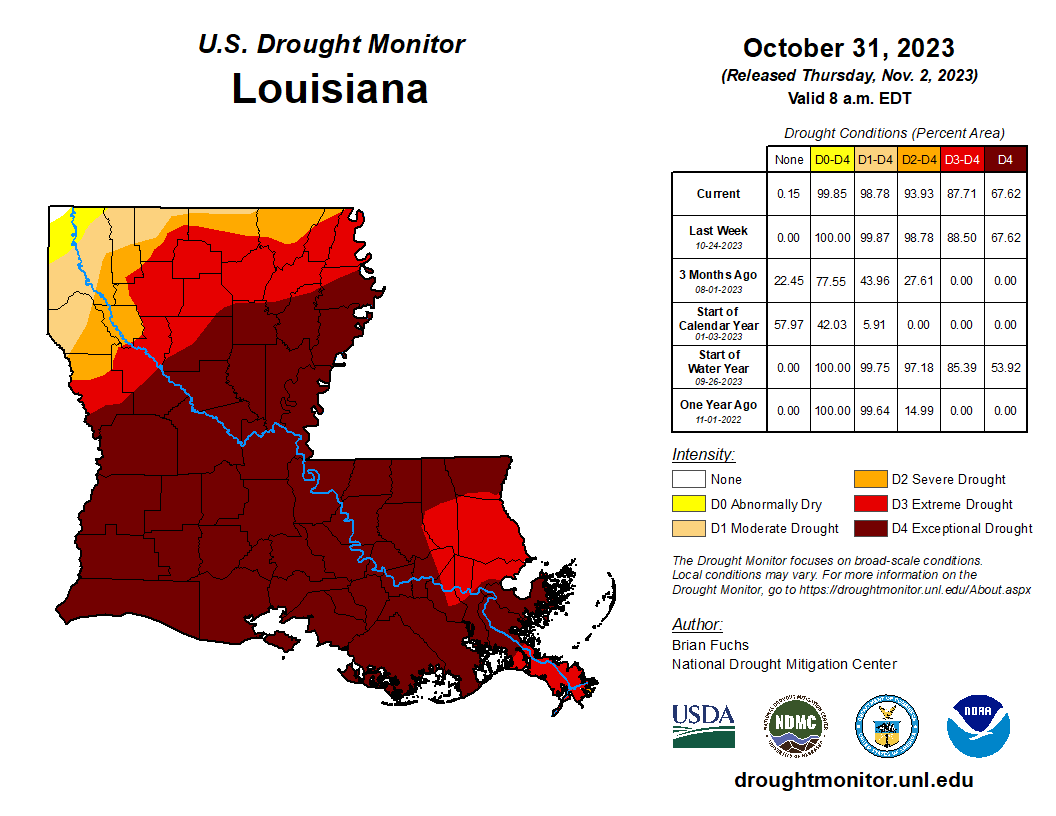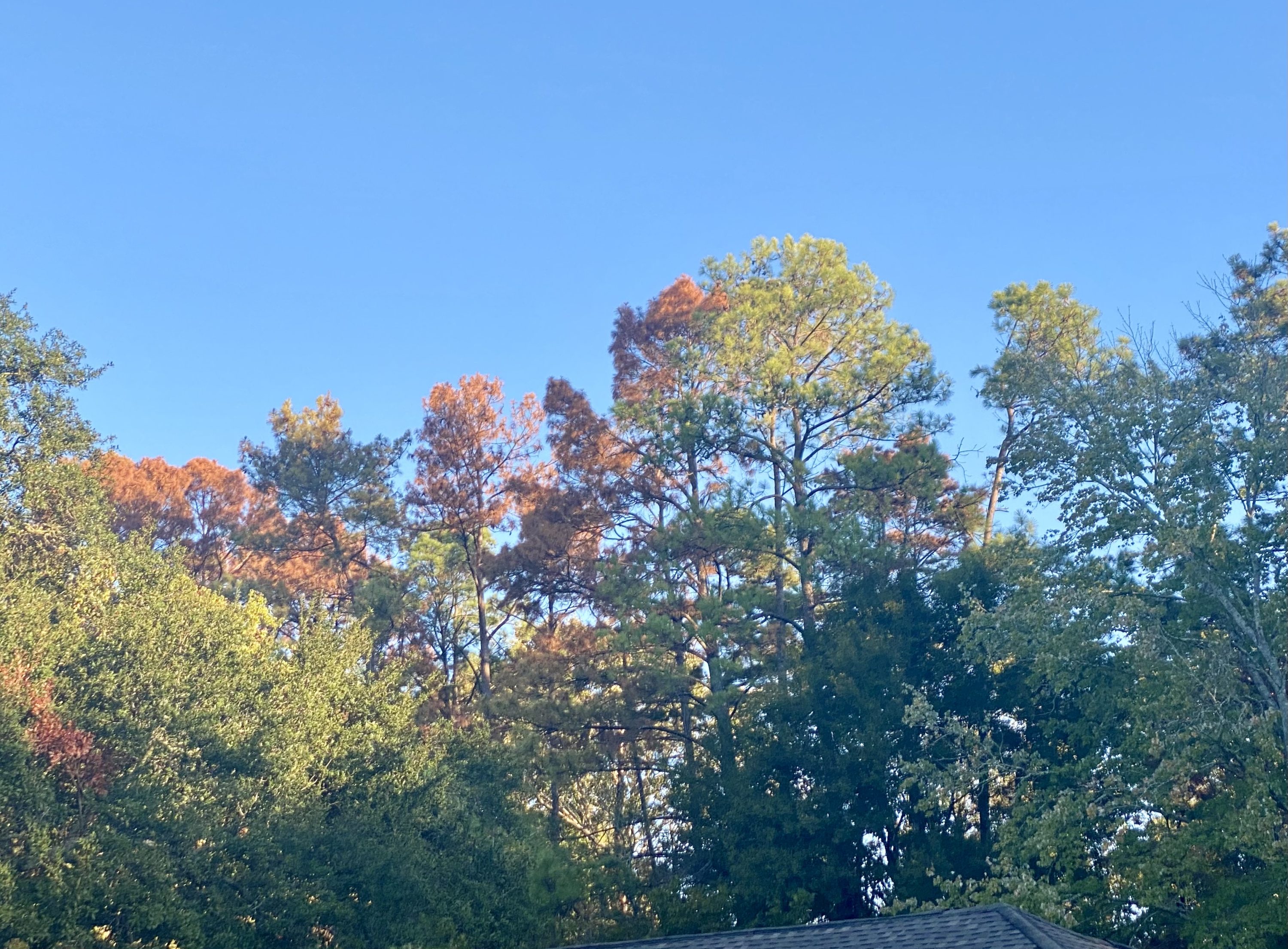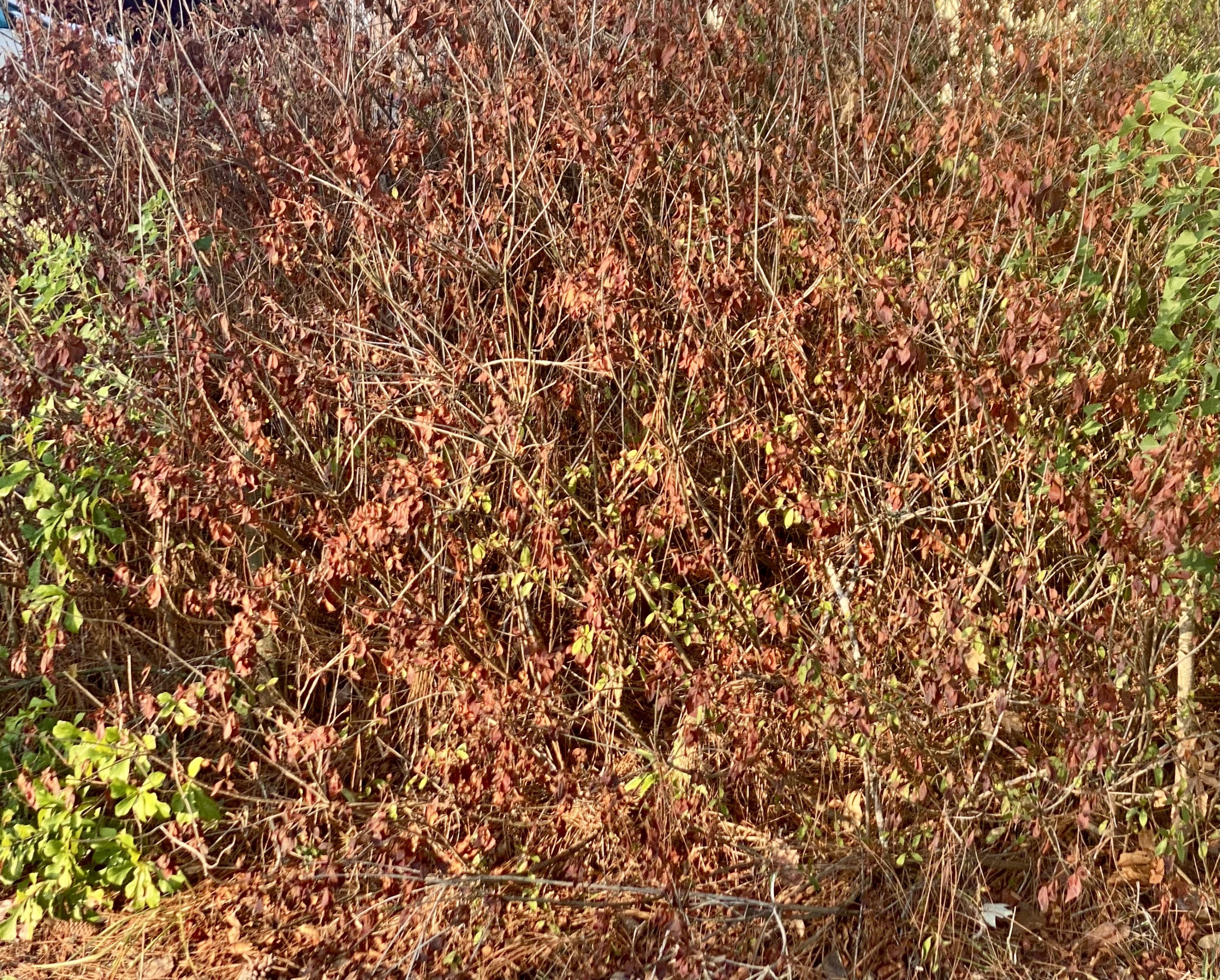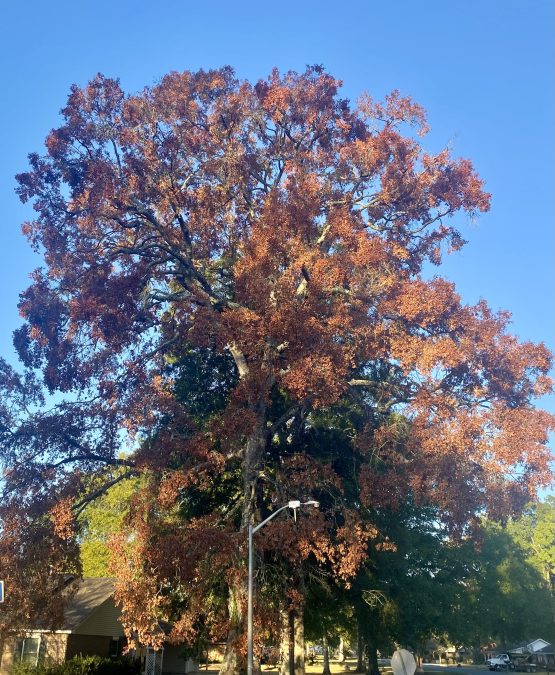
Pedestrian killed in Thibodaux crash
November 11, 2023
Nicholls Football wins third SLC title in six years with victory over Lamar
November 12, 2023LSU AgCenter Horticulturist
Excessive drought conditions in Louisiana are quickly becoming a natural disaster that will have effects on gardens, landscape plants and natural areas all across the state for some time. We may not understand the full extent of the damage for years. The U.S. Drought Mitigation Center has categorized a substantial portion of Louisiana’s parishes as being in an “exceptional drought” state for an extended period.
Without supplemental irrigation, many lawns have gone dormant or have areas where the lawn will not recover. Many smaller bedding plants and shrubs have died. As we have experienced months of drought, we are really beginning to see the damage to trees. Shrubs such as azaleas, junipers, spireas, camellias, have been affected too.
You may have noticed that some trees are more susceptible than others. In my personal observations and in talking with people in the forestry, landscape and green industries, magnolia species and pines appear to be the most frequently affected. In research conducted in the southeastern United States, scientists found that pines and mesophytic species (those that thrive in moderate moisture conditions) are sensitive to drought while oaks are more drought tolerant.

U.S. drought monitor for Louisiana. Photo provided by the National Drought Mitigation Center
Assessing damage after extended droughts is essential to determine the health and condition of your trees. Extended droughts can weaken trees and make them more susceptible to various issues.
Some signs that your tree is in distress: diminished leaf production, increased defoliation, interior thinning or dieback and smaller leaf size. If you want to assess the damage to our trees, start with a visual inspection of your trees to identify visible signs of damage.
Look for wilting or discolored leaves that are brown or yellow and prematurely dropping leaves, as they can be a sign of drought stress. Look for leaf scorch, where the edges of leaves turn brown, and check for cracks in the bark. Look for dying or dead branches. Many trees will sacrifice parts of the plant to survive. Check the overall canopy of the tree. Does it have a reduced canopy density or sparse foliage? This can be an indicator of drought damage.

The drought has had a pronounced impact on pine trees. Photo by Heather Kirk-Ballard/LSU AgCenter
You can check to see if a stem or branch is dead by gently pulling down on it to see how pliable it is. If it bounces back, it’s likely alive. If it snaps, it might be a goner. You can also scratch the bark of the stem. If you see green underneath, the plant is alive. If it is brown, it could be dead, depending on the species.
If you have real concerns that a tree is dead, another home assessment can be to check the condition of the tree’s root zone. Examine the roots for signs of damage such as root dieback or root rot. Gently dig around the base of the tree to inspect the roots without causing further harm. You can use a broom or large brush to gently sweep away soil.
It’s often beneficial to consult a certified arborist or tree care professional for a more comprehensive evaluation. Arborists have the expertise to assess tree health and recommend appropriate treatments or interventions. A list of licensed arborists can be found on the website of the Louisiana Department of Agriculture and Forestry.

Azalea bushes have been impacted by drought in the landscape. Photo by Heather Kirk-Ballard/LSU AgCenter
After assessing the damage, implement a supplemental watering and care plan to help the tree recover. Regularly monitor the tree’s health and progress. Adequate watering, mulching and pruning may be necessary to aid recovery.
In severe cases, if a tree has sustained significant damage and poses a risk of falling or is unlikely to recover, it may need to be pruned or removed. A professional tree service can help with this decision and the necessary work.
Drought-stressed trees are more susceptible to pests and diseases. Keep an eye out for any signs of infestation or disease and address them promptly. Due to persistent drought conditions and multiple instances of freezing in recent years, the trees in our area have experienced higher levels of stress than usual, and this will make them more vulnerable to high winds, disease and pest pressures.
Remember that tree recovery from drought damage can be a slow process, and it may take several years for a tree to fully regain its health and vigor. Regular maintenance and care can help prevent future drought-related damage and promote tree resilience. Don’t give up on your trees immediately. You can take measures to help them survive as mentioned above.
Always consult with a local arborist or horticultural expert for guidance tailored to the specific conditions in your area and the tree species in question.









